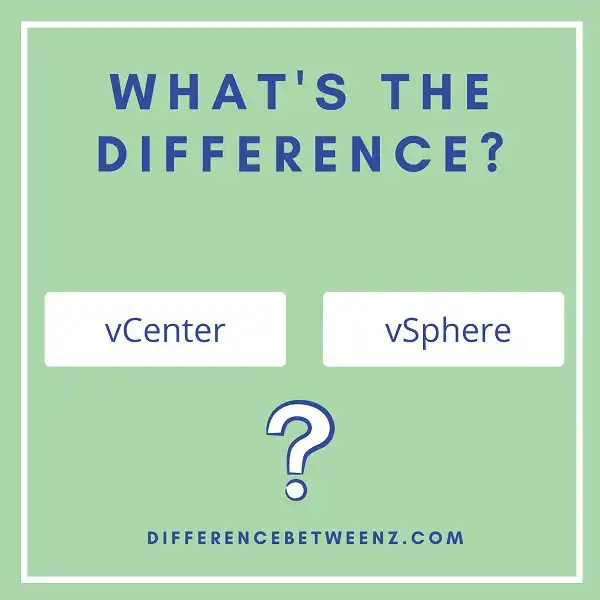VMware vCenter and VMware vSphere are both important components of VMware’s virtualization platform. However, they are not the same thing. In this blog post, we’ll explore the key differences between vCenter and vSphere. We’ll also take a look at which product is the best fit for your organization’s needs.
What is vCenter?
vCenter is a server application that provides a centralized platform for managing your VMware vSphere environments. With vCenter, you can deploy and manage virtual machines and ESXi hosts, create and manage vSphere networking and storage, monitor your system’s health, and more. In addition, vCenter also provides a powerful API that allows you to automate many of these tasks. As a result, vCenter is an essential tool for anyone who wants to manage a large VMware vSphere environment.
What is vSphere?
vSphere is a powerful virtualization platform that enables organizations to consolidate physical servers, improve server utilization, and reduce power and cooling costs. vSphere also provides a safe and isolated environment for running applications, making it an ideal platform for both development and production workloads. In addition, vSphere offers a number of features that make it easy to manage virtual machines, including snapshots, clones, and templates. With vSphere, organizations can get the most out of their server infrastructure and applications.
Difference between vCenter and vSphere
- VMware vSphere is a server virtualization platform that enables you to virtualize your server environment and consolidate multiple physical servers into a few virtual machines. VMware vCenter Server provides a centralized platform for managing your VMware vSphere deployment. It allows you to provision and deploy virtual machines and ESXi hosts, monitor performance and usage statistics, and manage users, permissions, and licenses. While they are both essential components of a VMware vSphere deployment, there are some key differences between vCenter and vSphere.
- vCenter Server is required in order to centrally manage your VMware vSphere environment, while vSphere can be deployed without it. vCenter Server also provides additional features and functions not available in vSphere, such as the ability to create templates and clones of virtual machines, to host VMworld (formerly known as Virtual Infrastructure Client or VIC), and to use the Distributed Resource Scheduler (DRS) feature.
- In summary, VMware vSphere is a server virtualization platform that enables you to consolidate multiple physical servers into a few virtual machines. VMware vCenter Server provides a centralized platform for managing your VMware vSphere deployment and includes additional features not available in vSphere.
Conclusion
The answer is that they are both essential for a functioning VMware environment but serve different purposes. vCenter is the centralized management platform for your virtual infrastructure, while vSphere is the actual software that makes everything run. If you’re looking to set up a VMware environment in your business, it’s important to understand these differences and how they impact your overall system.


